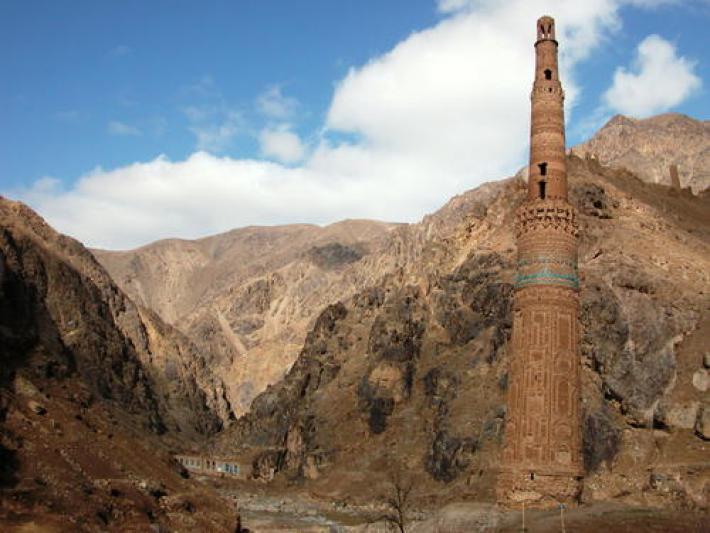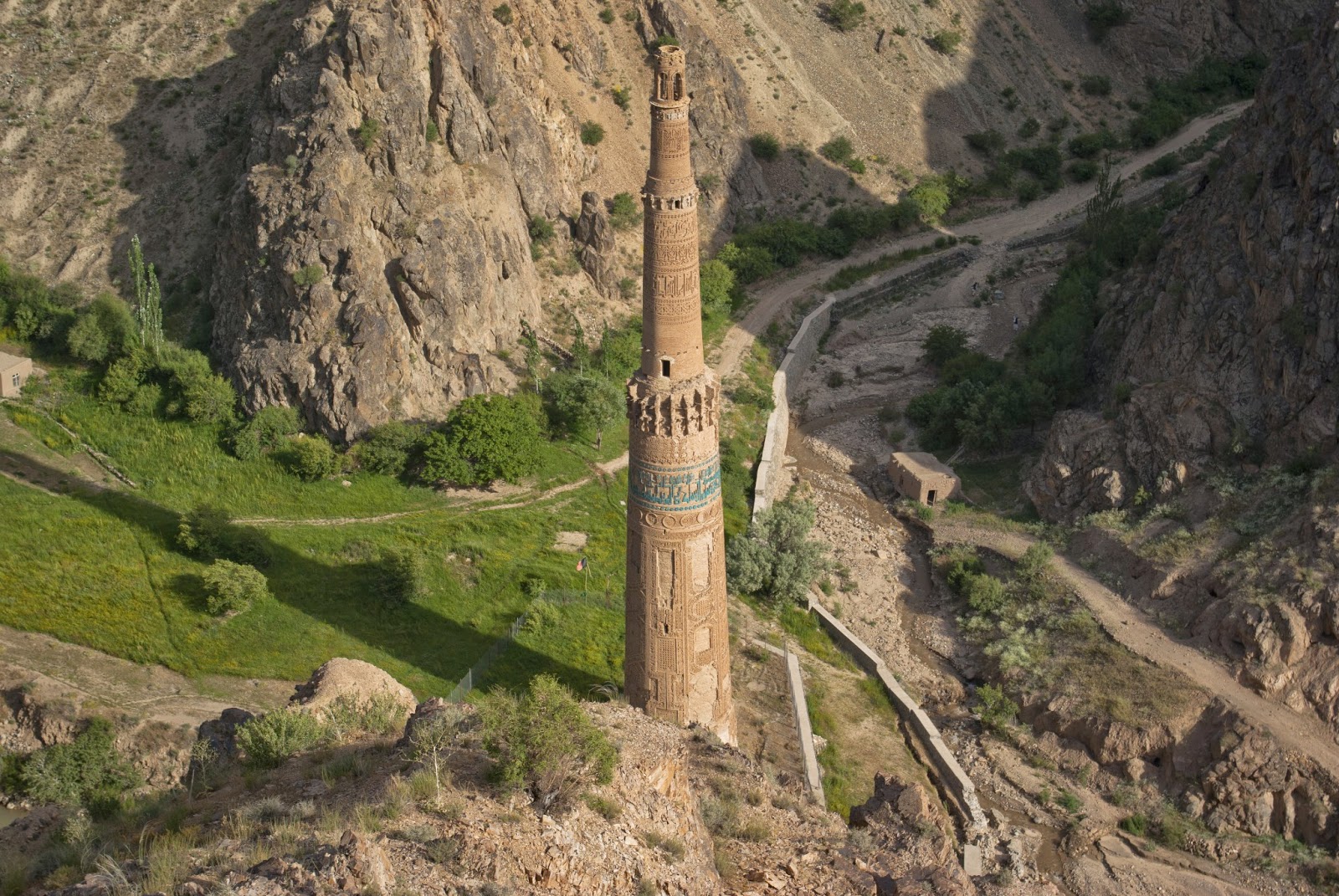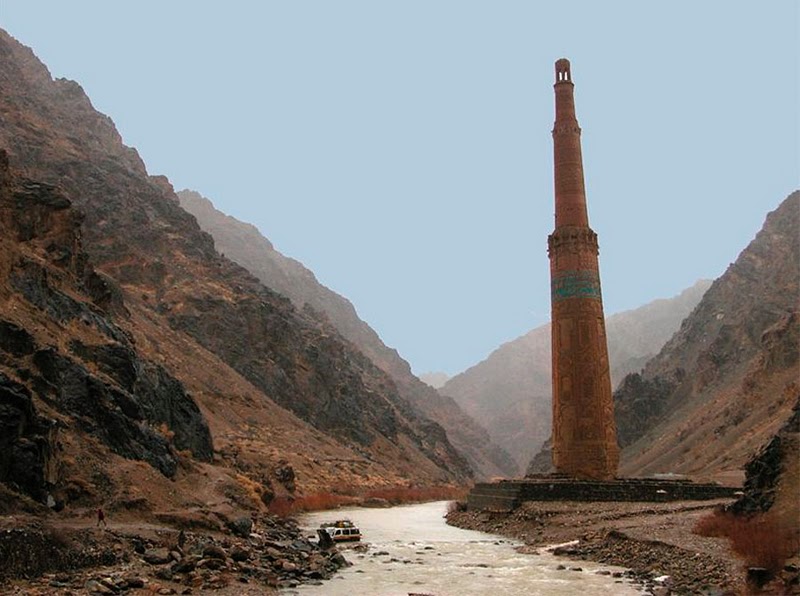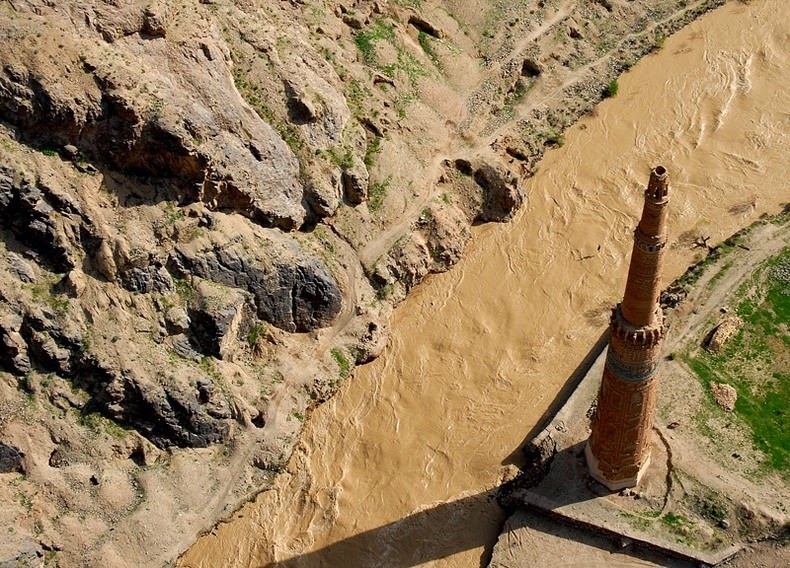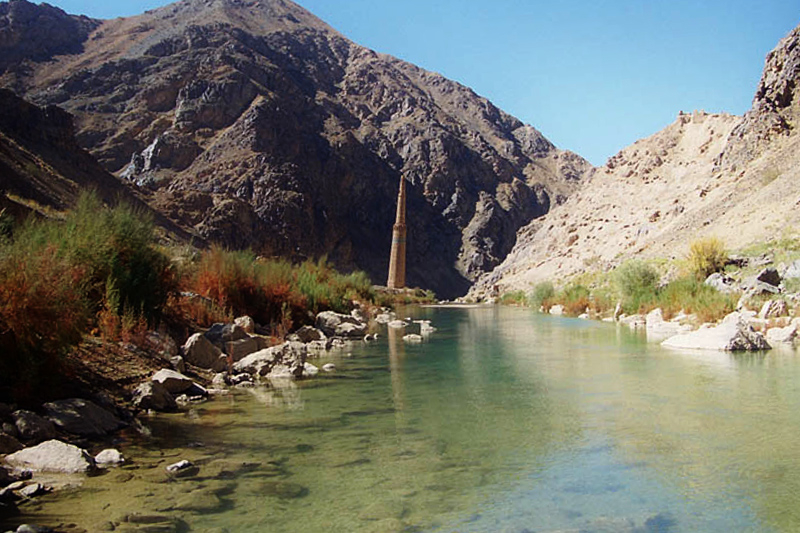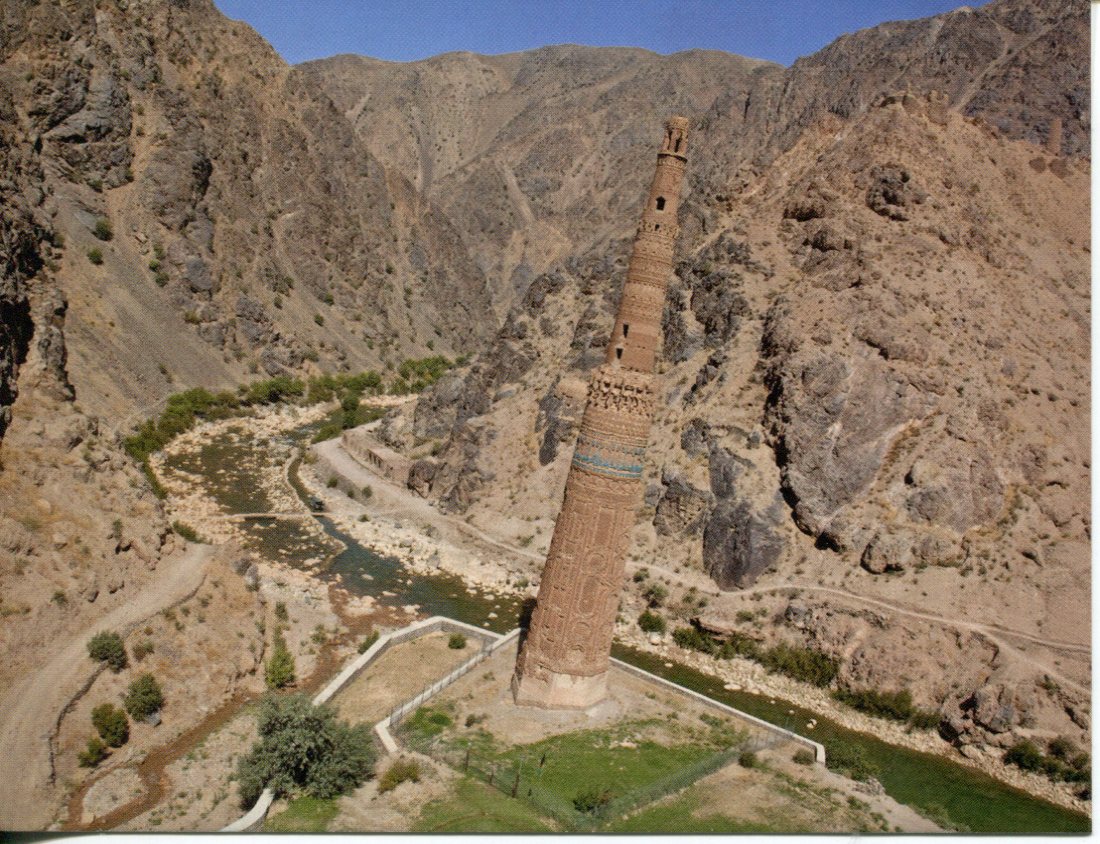The Minaret of Jam is a UNESCO World Heritage Site in western Afghanistan. It is located in a remote and nearly inaccessible region of the Shahrak District, Ghor Province, next to the Hari River. The 62-metre (203 ft) high minaret was built around 1190 entirely of baked bricks and is famous for its intricate brick, stucco and glazed tile decoration, which consists of alternating bands of kufic and naskhi calligraphy, geometric patterns, and verses from the Qur'an. As of 2013 the minaret remained on the list of World Heritage in Danger, under serious threat of erosion, and was not actively being preserved. In 2014 the BBC reported that the tower was in imminent danger of collapse.
The circular minaret rests on an octagonal base; it had 2 wooden balconies and was topped by a lantern. Its formal presentation has a striking similarity to the minaret built by Masud III in Ghazni. It is thought to have been a direct inspiration for the Qutub Minar in Delhi, which was also built by the Ghurid Dynasty. After the Qutub Minar in Delhi, India, which it inspired, the Minaret of Jam is the second-tallest brick minaret in the world.
The Minaret of Jam belongs to a group of around 60 minarets and towers built between the 11th and the 13th centuries in Central Asia, Iran and Afghanistan, ranging from the Kutlug Timur Minaret in Old Urgench (long considered the tallest of these still in existence) to the tower at Ghazni. The minarets are thought to have been built as symbols of Islam's victory, while other towers were simply landmarks or watchtowers.
The archaeological landscape around Jam also includes the ruins of a 'palace', fortifications, a pottery kiln and a Jewish cemetery, and has been suggested to be the remains of the lost city of Turquoise Mountain.
The archaeological site of Jam was successfully nominated as Afghanistan's first World Heritage site in 2002. It was also inscribed in UNESCO's list of World Heritage in Danger, due to the precarious state of preservation of the minaret, and results of looting at the site.




